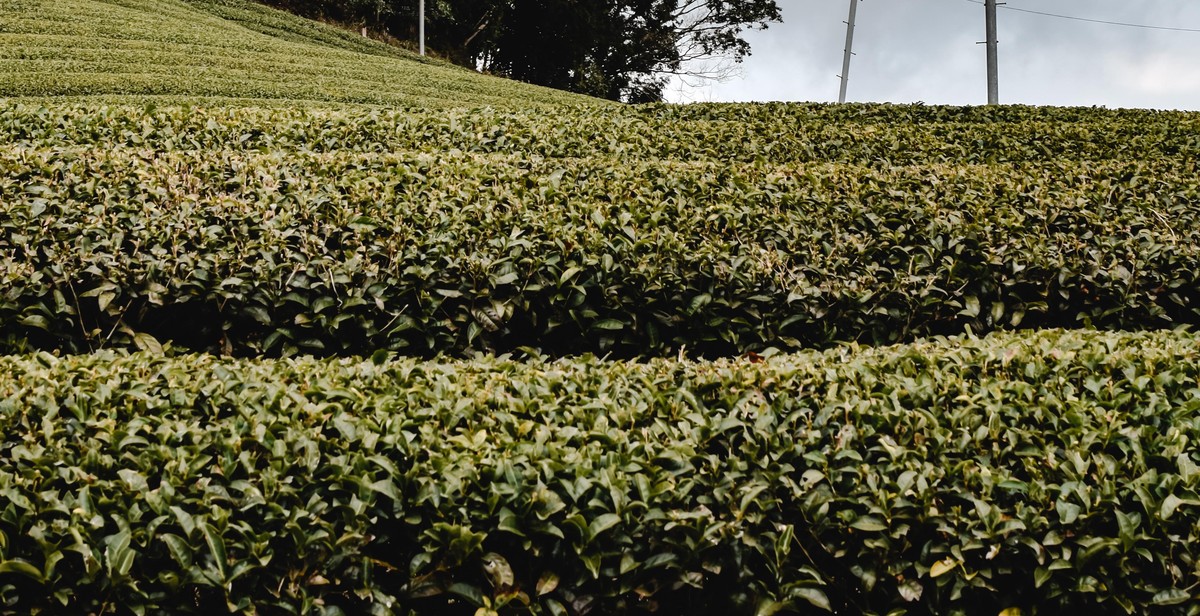How to Appreciate and Identify Different Types of Green Tea
Green tea is a popular beverage that has been enjoyed for centuries due to its numerous health benefits and unique taste. However, not all green teas are created equal, and it can be challenging to differentiate between them. In this article, we will explore the different types of green tea and provide tips on how to appreciate and identify them.
Types of Green Tea
Green tea is produced from the Camellia sinensis plant and is known for its minimal processing, which helps to retain its natural flavor and nutrients. There are various types of green tea available, including:
- Sencha
- Matcha
- Dragonwell (Longjing)
- Gyokuro
- Bancha
Each type of green tea has its unique taste, aroma, and health benefits. Understanding the differences between them can help you appreciate and identify the type of green tea you are drinking.
Appreciating and Identifying Green Tea
Several factors can affect the taste and aroma of green tea, including the quality of the leaves, water temperature, and brewing time. To fully appreciate and identify the different types of green tea, it is essential to pay attention to these factors and use all your senses.
By understanding the different types of green tea and learning how to appreciate and identify them, you can elevate your tea-drinking experience and enjoy the unique flavors and health benefits of green tea.

What is Green Tea?
Green tea is a type of tea made from the leaves of Camellia sinensis, the same plant used to make black and oolong teas. However, unlike black and oolong teas, green tea is not fermented during its production process. This results in a tea with a lighter color, milder flavor, and a lower caffeine content.
Origin and History of Green Tea
Green tea originated in China and has been consumed for thousands of years. According to legend, in 2737 BC, the Chinese Emperor Shennong accidentally discovered the benefits of green tea when a few tea leaves fell into his cup of hot water. Since then, green tea has been an integral part of Chinese culture and traditional medicine.
Green tea was introduced to Japan in the 8th century by Buddhist monks who traveled to China to study. They brought back tea seeds and planted them in Japan, where the tea culture flourished. Today, Japan is known for its high-quality green teas, such as matcha and sencha.
Green Tea Production Process
The production process of green tea involves several steps:
- Harvesting: The leaves are picked by hand or machine, usually in the early spring when the leaves are young and tender.
- Steaming or pan-firing: The leaves are quickly heated to stop the oxidation process and preserve their green color and fresh flavor. In Japan, the leaves are steamed, while in China, they are pan-fired.
- Rolling: The leaves are rolled to shape them and release their flavor and aroma.
- Drying: The leaves are dried to remove any remaining moisture and to stabilize their flavor.
The production process of green tea is crucial in determining its quality and flavor. Different regions and countries have their own unique methods of producing green tea, resulting in a wide variety of flavors and aromas.
Overall, green tea is a popular and healthy beverage that has been enjoyed for centuries. Its unique production process and rich history make it a fascinating topic for tea enthusiasts and health-conscious individuals alike.

Types of Green Tea
Green tea is known for its health benefits and is consumed all over the world. However, not all green teas are created equal. In fact, there are various types of green teas, each with its own unique flavor, aroma, and processing method. Here are some of the most popular types of green tea:
Japanese Green Tea
Japanese green tea is known for its rich, grassy flavor and is produced mainly in Japan. The most popular type of Japanese green tea is called sencha, which is made from young tea leaves and is rich in antioxidants. Other popular Japanese green teas include matcha, which is made from finely ground tea leaves and is used in traditional Japanese tea ceremonies, and genmaicha, which is a combination of green tea and roasted brown rice.
Chinese Green Tea
China is one of the largest producers of green tea, and there are many different types of Chinese green tea. Some of the most popular varieties include Longjing (Dragonwell), which has a nutty flavor and is grown in the Hangzhou region, and Bi Luo Chun (Green Snail Spring), which has a fruity flavor and is grown in the Jiangsu province. Other popular Chinese green teas include Mao Feng, Gunpowder, and Huangshan Maofeng.
Korean Green Tea
Korean green tea is produced mainly in the Boseong region and is known for its grassy, slightly sweet flavor. The most popular type of Korean green tea is called Jeoncha, which is made from young tea leaves and has a light, refreshing taste. Other popular Korean green teas include Sejak, which is made from more mature leaves and has a stronger flavor, and Jungjak, which is made from the third or fourth leaves and has a milder taste.
Other Green Teas
Aside from Japanese, Chinese, and Korean green teas, there are many other types of green teas from different parts of the world. Some of these include:
- Moroccan Mint Tea, which is a combination of green tea and mint
- Bancha, a Japanese green tea made from mature tea leaves
- Gyokuro, a Japanese green tea made from shade-grown tea leaves
- Dragonwell, a Chinese green tea with a nutty flavor
No matter what type of green tea you prefer, each variety has its own unique flavor and aroma. By trying different types of green tea, you can discover which ones you like best and appreciate the subtle differences between each variety.

Health Benefits of Green Tea
Green tea is one of the healthiest beverages that you can consume. It is packed with essential nutrients and antioxidants that offer numerous health benefits. Here are some of the top health benefits of green tea:
Weight Loss
Green tea contains a high concentration of catechins, which are natural antioxidants that help to boost metabolism and burn fat. According to a study published in the American Journal of Clinical Nutrition, green tea can help to increase fat oxidation by up to 17%, which can lead to weight loss.
Reduced Risk of Chronic Diseases
Green tea is loaded with powerful antioxidants called polyphenols, which help to protect cells from damage caused by free radicals. These antioxidants can help to reduce the risk of chronic diseases such as cancer, diabetes, and heart disease. A study published in the Journal of the American Medical Association found that consuming green tea can help to reduce the risk of death from heart disease by up to 31%.
Boosted Brain Function
Green tea contains caffeine, which is a natural stimulant that can help to improve brain function. It also contains an amino acid called L-theanine, which can help to increase alpha wave activity in the brain, leading to improved focus and concentration. A study published in the journal Psychopharmacology found that consuming green tea can help to improve cognitive function and mental alertness.
| Health Benefit | How Green Tea Helps |
|---|---|
| Weight Loss | Boost metabolism and burn fat |
| Reduced Risk of Chronic Diseases | Protect cells from damage caused by free radicals |
| Boosted Brain Function | Improve cognitive function and mental alertness |
- Green tea helps in weight loss by boosting metabolism and burning fat
- Green tea reduces the risk of chronic diseases such as cancer, diabetes, and heart disease by protecting cells from damage caused by free radicals
- Green tea improves brain function by increasing alpha wave activity in the brain, leading to improved focus and concentration
Overall, green tea is a superfood that offers numerous health benefits. Incorporating green tea into your daily routine can help to improve your overall health and well-being.

How to Appreciate Green Tea
Green tea is a delicate and refreshing beverage that has been enjoyed for centuries. To fully appreciate the taste and benefits of green tea, it’s important to choose high-quality tea leaves, brew them properly, and taste them with intention. Here’s how:
Choosing High-Quality Green Tea
The quality of green tea depends on several factors, including the region where it was grown, the time of year it was harvested, and the processing method used. When choosing green tea, look for leaves that are bright green and uniform in size, with a fresh, grassy aroma. Avoid tea that has a dull or yellowish color, as this may indicate that the leaves are old or low-quality.
It’s also important to choose tea that has been stored properly. Green tea should be stored in an airtight container away from light, heat, and moisture. Avoid buying tea that has been stored in a clear container or that has a strong, artificial scent, as this may indicate that the tea has been exposed to air or other contaminants.
Brewing Green Tea
To brew green tea, start by heating water to the appropriate temperature. Green tea should be brewed with water that is between 160°F and 180°F, or just below boiling. Use a tea kettle or a thermometer to ensure that the water is at the correct temperature.
Next, measure out the appropriate amount of tea leaves. A general guideline is to use one teaspoon of tea per cup of water. Place the tea leaves in a strainer or infuser and place it in a teapot or cup.
Pour the hot water over the tea leaves and let it steep for 1-3 minutes, depending on the type of green tea. Be careful not to oversteep the tea, as this can make it bitter. Remove the tea leaves from the water and enjoy.
Tasting Green Tea
When tasting green tea, take the time to appreciate its aroma, flavor, and texture. Smell the tea before taking a sip to appreciate its aroma. Then, take a small sip and let it sit on your tongue for a few seconds before swallowing. Notice the flavor notes, such as grassy, nutty, or floral, and the texture of the tea, such as smooth or astringent.
Green tea can be enjoyed on its own or paired with food. It’s a versatile beverage that can be enjoyed hot or cold, and its delicate flavor makes it a great complement to a wide range of dishes.

Conclusion
Green tea is a popular beverage that offers numerous health benefits. It is considered a superfood due to its high concentration of antioxidants and other beneficial compounds. In this article, we have discussed the various types of green tea, their unique characteristics, and how to appreciate them.
It is important to note that the quality of green tea can vary depending on factors such as harvesting time, processing methods, and storage conditions. Therefore, it is essential to purchase green tea from reputable sources to ensure its authenticity and quality.
When preparing green tea, it is crucial to follow the appropriate brewing instructions to avoid bitterness and ensure maximum flavor and health benefits. Additionally, experimenting with different brewing methods and tea blends can help you discover your preferred green tea flavor profile.
Overall, green tea is a versatile and delicious beverage that can be enjoyed in various forms, including hot tea, iced tea, and even in cooking and baking. Incorporating green tea into your daily routine can provide numerous health benefits and enhance your overall well-being.
- Remember to choose high-quality green tea from reputable sources
- Follow the appropriate brewing instructions for maximum flavor and health benefits
- Experiment with different brewing methods and tea blends to discover your preferred flavor profile
- Incorporate green tea into your daily routine to reap its numerous health benefits
Whether you are a seasoned tea enthusiast or a newcomer to the world of green tea, we hope this article has provided valuable insights and information to help you appreciate and identify different types of green tea.
